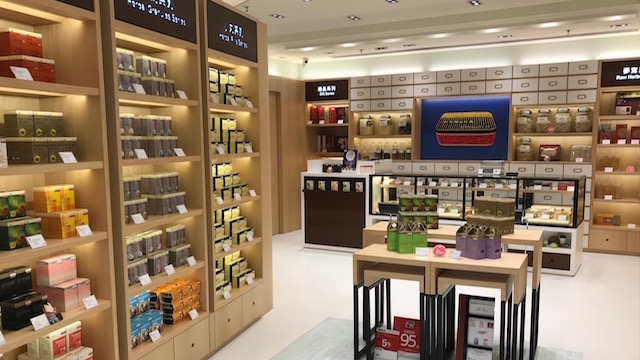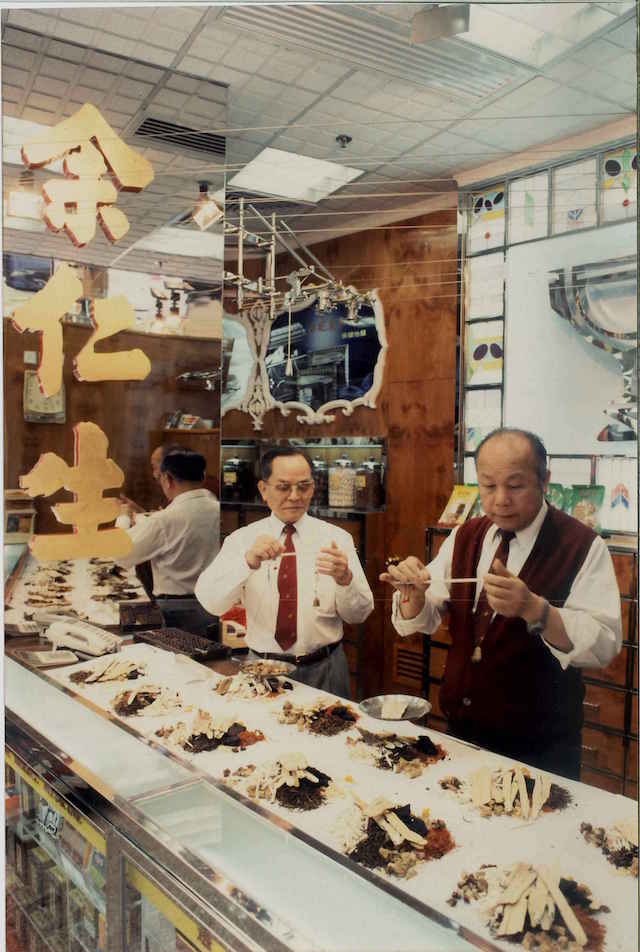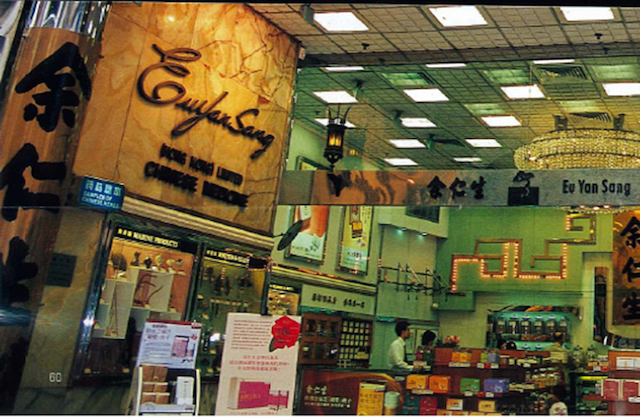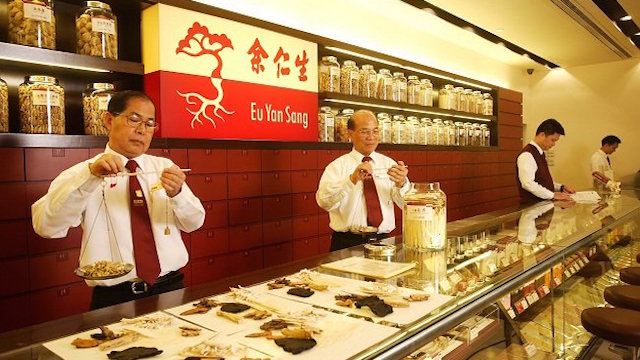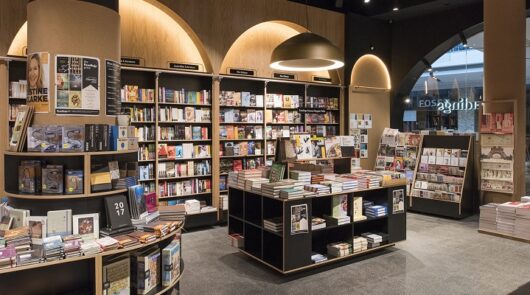Traditional Chinese Medicine (TCM) retailer Eu Yan Sang is turning back to its roots to inspire tomorrow’s customers.
As the company rolls out a new generation store format in Hong Kong, the brand is highlighting its heritage to give credibility to modern millennial customers.
Eu Yan Sang Trading Hong Kong’s MD is Richie Eu, a direct descendent of the brand’s Chinese founder, Eu Kong Pai, better known as Eu Kong, who in 1879 opened his first store in Perak, Malaysia, to cater to the miners working there. After ownership passed through multiple generations of the Eu family, Richie Eu’s father, also named Richie, has led a dramatic expansion of the now Singapore-based company during recent years, turning it into an international business with some 300 stores around the globe, including the 55-strong Healthy Life chain in Australia and 90 stores in Malaysia.
Moving on from maroon
“Our previous store design dates back about 15 years and was a sea of maroon,” Eu told Inside Retail Hong Kong on site at the company’s newest Hong Kong outlets, on the fifth floor of the Moko shopping centre in Mongkok.
“So we worked with a Singaporean architect and design firm on an update. We tried to work out how to retain some heritage parts but also embrace health and wellness. Before everything was very dark. Now it’s bright.”
The Moko store is the first iteration of the new design in Hong Kong, although the new format has been refined significantly in Singapore where about 45 of the 52 there now feature the new styling.
At Moko, Eu Yan Sang has blended a sense of heritage with a bright, modern style and technology to encourage interaction with customers.
Alongside the packaged Chinese medicines, LED screens controlled centrally at head office allow content to be updated as the brand decides.
“We are trying to add technology into a store that works for us. You don’t want to add technology just for the sake of it. So we have the LED screens, we have foot traffic counters so we can create heat maps around store and see where people are browsing.”
There is a touch screen where customers can get product information and learn about the brand in store – but skilled staff are also on hand, willing to engage.
One of the ways of introducing a sense of history to the in-store retail experience is a series of retro packaging designs commissioned from an artist. Some of the older products are now packaged in the way they may have looked a century ago. They feature the original Eu Yan Sang logo, influenced by Eu Kong’s passion for horse racing.
A typical Eu Yan Sang store in Hong Kong has a footprint of 400-500sqft and stocks about 1000 SKUs, separated into two categories: fine and mixed herbs and medicines; and raw or loose herbs and food products like birds best.
Its customers are almost entirely Chinese although the mix depends on the location. Outlets in local shopping malls will attract a mix of local Hongkongers and visiting mainlanders, but stores near the border mostly serve mainlanders stocking up from a brand they recognise and trust, knowing most of the products are manufactured in the company’s Hong Kong factory. It is not unusual for mainland customers to spend more than HK$10,000 in a single transaction – and that figure can run as high as $100,000. Local customers will return to the stores more often to buy products like soup packs to prepare for their families and everyday remedies.
Old school
Richie Eu says a challenge for his company is encouraging people to explore what the stores have to offer, and he believes the new aesthetic is more welcome than the darkened look of the past.
“The challenge is driving footfall into stores, because once people are inside, the conversion rate is very high.” Consequently he wants the stores to look inviting and welcoming, not dark and intimidating.
Most of Eu Yan Sang’s customers are what Richie would term “old school” and the company is actively trying to engage with younger customers. As one of only two major recognised brands in the TCM market, Eu Yan Sang has the brand awareness, but he knows it needs to a better job in terms of education.
He is happy if customers get to know the company by walking in and chatting with staff and walking away with a piece of advice – even if they don’t buy anything.
Eu Yan Sang has 59 stores in Hong Kong and two in Macau. Next on the upgrade list are the stores at Sands’ Venetian in Macau and – still subject to confirmation from airport management – Hong Kong International Airport’s T1 departures area, targeting mainlanders heading home. Both will feature “heritage walls” with artwork reminding shoppers of the brand’s history. An “aggressive” rollout program for the new look will follow, says Richie.
Staff the key
Richie Eu says one of the most challenging parts of updating store formats is staffing.
“You can have a great looking store, but if your staff do not know how to sell or how to talk to customers, it’s just a store.
“I think in Hong Kong you can find staff but for our industry it is challenging because … they’re selling medicine. First you need to have the passion for it because you are helping people. Second you have to have the patience to learn. And third you need to be credible enough that people trust what you are saying.”
Eu Yan Sang has several clinics with physicians employed, but they are very careful to draw the line between prescribing and retailing.
“People go in for a consultation, the physicians will give you a prescription for herbs – and if you want to buy from our store, we have one here, but you can buy them where you like.”
He believes that is a more transparent approach than putting physicians in stores where there is a suspicion they are just pushing sales rather than helping with genuine health advice. “You don’t want doctors to be pushing products.”
Growth category
The TCM industry is growing, buoyed in Hong Kong by the return of mainlanders to the city. Richie Eu believes his company’s growth rate is running higher than the market average.
There is evidence that more and more consumers – not only Chinese – are starting to become more aware of traditional medicines and trying them, sometimes in preference to western pharmaceuticals.
“Consumers are becoming more and more concerned for their health and they are taking Chinese medicine because it is natural,” says Richie Eu. “Our goal here is to demystify Chinese medicine and make it accessible.”
Indeed, according to various media sources, more than 100 countries and regions around the world have set up TCM institutions, including in the US, Europe, Japan and South Korea, where significant investment is underway.
UK-headquartered pharmaceutical powerhouse GlaxoSmithKline has established a TCM medication research and development program in Shanghai, with plans to target not just China, but global markets as well.
“TCM is a well-established medical science based on thousands of years of clinical practices,” Zang Jingwu, senior VP and head of GlaxoSmithKline R&D in China told The Economist.
“It shows great promise treating complicated conditions that the single-target Western medicine has failed to handle. Our priority is to transform TCM from an experience-based practice to evidence-based medicines through innovation and differentiation.”
In the past six years, the number of licensed TCM practitioners in China has increased by nearly 50 per cent, to more than 450,000 and the Chinese government is subsidising education on TCM therapies in the US, Britain and other markets through its network of “Confucius Institutes”.
Richie Eu, however, is careful not to present TCM as an either-or solution compared with western medicines, a view backed up by his own example.
“I take multivitamins and I take fish oil – but I also take Chinese medicines.”

